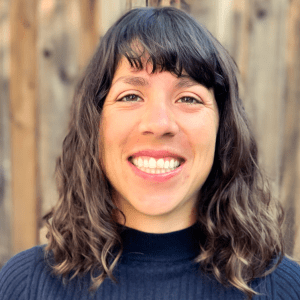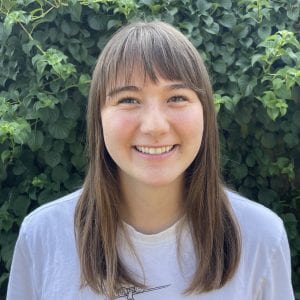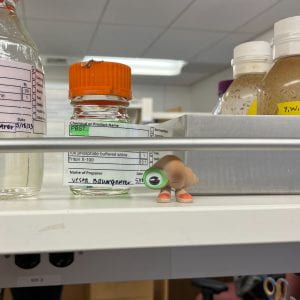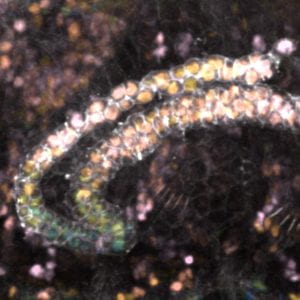The goal of the Vásquez lab is to understand the molecular rules that cells use to build and shape functional organs. Currently, we are studying the morphogenesis of the Drosophila melanogaster renal system – the Malpighian tubules. The ability to watch this organ grow and manipulate it in real time make it an ideal system for dissecting the emergent properties cells use to build complex tissue structures.
research
The Vásquez lab seeks to identify the molecular and physical mechanisms that cells use to build our organs. The goal of our lab is to dissect the emergent properties cells used to build complex higher-order tissue structures, like our organs. We take a multidisciplinary approach, using a combination of quantitative light microscopy, genetics, and biochemistry using the developing renal system of the fruit fly (Drosophila melanogaster Malpighian tubules) as an in vivo model for organogenesis.
The developing fly renal system involves the generation and extension of two pairs of tubes that fold on themselves in a stereotypic manner providing an ideal model in which to isolate the parameters that generate specific cell shapes while keeping the cells in an in vivo context. Work in our lab will leverage the known pathways and molecular mechanisms at work in studying cells at an individual basis to uncover how cells integrate these features into highly regulatable 3D tissue forms.

Current work in our lab will focus around two central questions:
[1] How do cells manage changing shape?
Over the course of 6 hours Malpighian tubules extend 4-fold in length without any cell proliferation. Throughout this process, tubule cells transition from tall columnar cells to short cuboidal cells. This transformation provides an opportunity to understand how cellular domains adapt to changing cellular dimensions in a developing organ.
[2] How do cells build tubes that fold on themselves and still function?
We are beginning to understand how tissues make prevalent epithelial motifs like folds and tubes. However, the tissue structures that make up organs are more complicated than these simple motifs. These motifs are combined to generate higher order structures with 3D folded patterns, for example a tube that loops, or a fold within the epithelial structure of a tube.
news
the lab attends NWSDB and welcomes spring
The lab attends NWSDB The whole lab attended the Northwest Regional Society for Developmental Biology meeting at Friday Harbor Labs. Some highlights include: learning about the developmental biology research in the PNW! ferry rides (unfortunately no marine mammals were spotted) tide pooling at Lime Kiln Michelle presenting a poster … and winning an award for …
Continue reading “the lab attends NWSDB and welcomes spring”
the lab turns one, and more! 🥳
The lab(s) turned one year-old in January! We had a celebration with the Bryant Lab, Gilliespie Lab, and Kong Lab to celebrate! We are grateful to have such a great community of labs surrounding us (especially Claudia). Two new members – Lily & Makenna Lily is a Biochemistry graduate student who is rotating with us …
👻🎃 sp00ky halloween 🎃👻
We had a joint Bryant, Kwon, & Vásquez lab inaugural pumpkin carving event! Thanks to Isabel, Michelle, & Vesta for organizing this fun event! Thanks to all the carvers for participating!
people
 |
Claudia Vásquez Assistant professor, Biochemistry she/her joined: Jan 2023 |
| Claudia is interested in how cells “feel” when they’re sculpting 3D tissue forms. She received her B.S. in Biology from Brandeis University, her Ph.D. in Biology from MIT, and did her postdoc at Stanford University.
Outside of lab, you can usually find her outside, often on a frisbee field. If not, you might find her binge watching TV. |
|
| Michelle Chicas Graduate student she/her joined: Mar 2023 |
 |
| Michelle is a graduate student in UW’s Biochemistry department. She received her B.S. in Chemistry from Utah Valley University in 2022 where she conducted research on microplastics using light microscopy and Raman spectroscopy. Because of her previous interest in microscopes, she quickly fell in love with the confocal microscope in the Vásquez lab.
Outside of the lab, you can find Michelle doing a variety of artistic activities. She enjoys combining her love of science and art to create jewelry. Additionally, she likes to lounge with her cat, play video games with her partner, or enjoy the sun and rain of Seattle. |
|
 |
Vesta Baumgartner
Research scientist she/her joined: May 2023 |
| As a new research scientist in the Vásquez lab, Vesta spends her time doing experiments, taking care of flies, and getting lost in the Health Science Building. Before working in the Vásquez lab, she received her B.S. in Biology from the University of Washington in 2021
Outside of the lab, Vesta spends her time entertaining her dog, bouldering, and cooking. |
|
|
Rishik Chakrabarti High school student researcher he/him joined: July 2023 |
 |
| Rishik is a student at Interlake High School who is actively engaged in multiple activities within his high school. From science-related clubs to student government and theater, he demonstrates his involvement in various ways. On his quest to find research, he discovered the Vásquez Lab and was instantly intrigued by its research. With a longstanding interest in biochemistry and genetics, Rishik is thrilled about combining these two disciplines while working in the lab.
Outside of the lab, Rishik enjoys skiing, biking, and spending quality time with his family, friends, and beloved dog. |
|
 |
Megan Yi Undergraduate student she/her Joined: September 2023 |
| Megan is a sophomore at University of Washington. She is a Biochemistry major and her interest in cell differentiation and biology led her to the Vásquez lab. She is fascinated by how many factors go into play in the arrangement of cells and how that leads to organ formation, along with anything related to evolution.
In her free time, her favorite activities are crocheting, watching documentaries (especially nature ones) and going on Wikipedia binges about history. |
|
|
Makenna Carnahan Undergraduate student she/her, any joined: January 2024
|
 |
| Makenna is a second-year biochemistry student at UW with a strong passion for chemistry, biology, and bugs. As a result, she is thrilled to be a part of the Vásquez lab and to look at, read about, and think about fly tubes.
When she’s not in the lab, Makenna can be found haunting campus libraries and study halls, playing with her pet fish named Dos, or baking treats to give to friends. |
|
|
|
Hayden Gizinski Rotation student spring 2024 she/her Joined: March 2024 |
|
Hayden is a first-year PhD student in the Molecular and Cellular Biology program at UW. She received her B.S. in Molecular, Cellular, and Developmental Biology from the University of Washington in 2022 and has previously done research on mitochondrial signaling and ribosome biogenesis. Her research interests include cell differentiation and cancer, and she is excited to use stellate cell migration and integration to study mechanisms of development and mesenchymal-to-epithelial transition. Outside of lab, Hayden enjoys being outside, crocheting, and caring for her plants. |
|
|
Marcel the Shell with Shoes On Lab mascot he/him appeared: August 2023 |
 |
|
Marcel enjoys monitoring the lab’s activities. For fun, he hang glides from a Dorito or walks his pet fluff Allan. |
|




